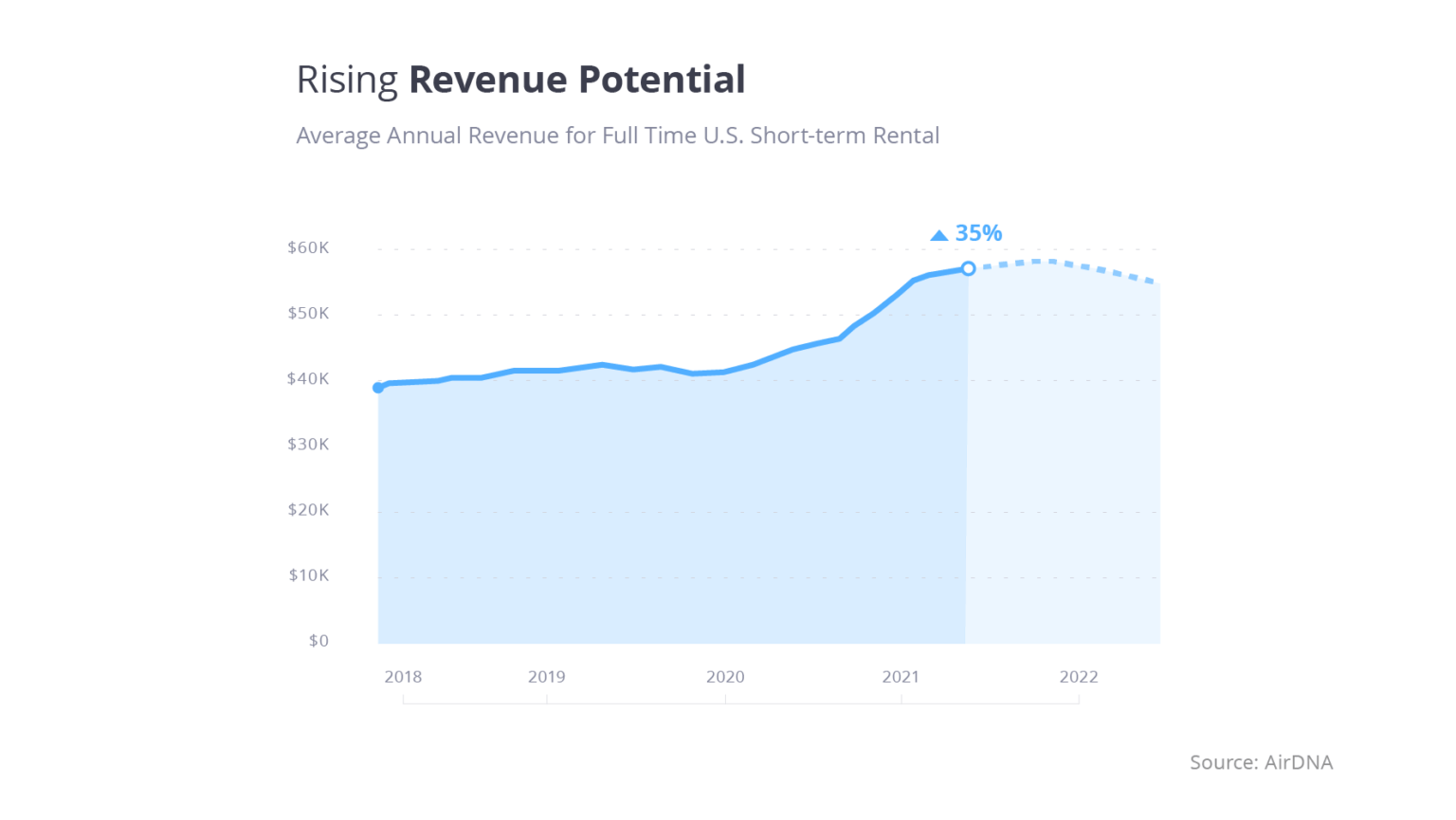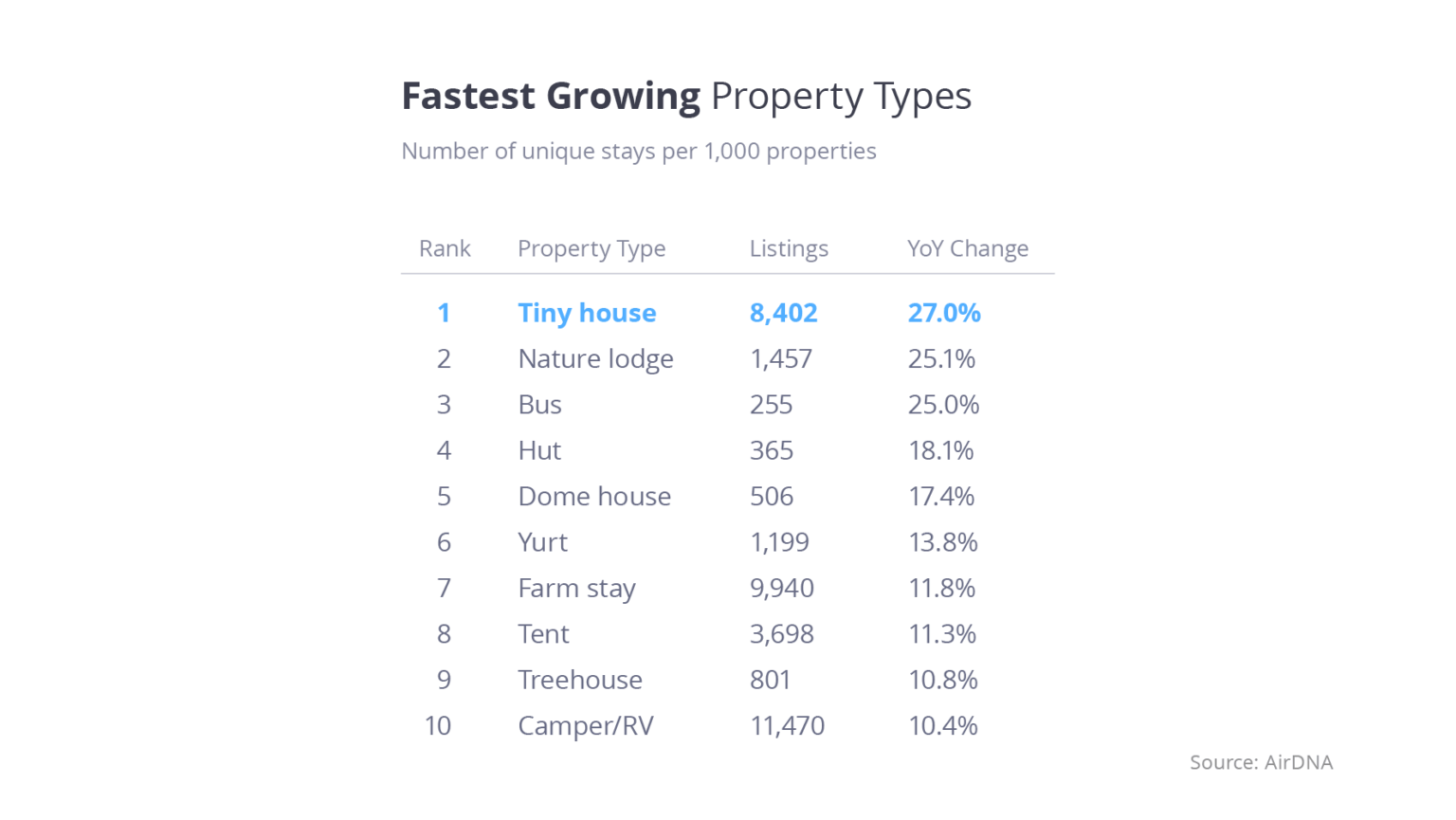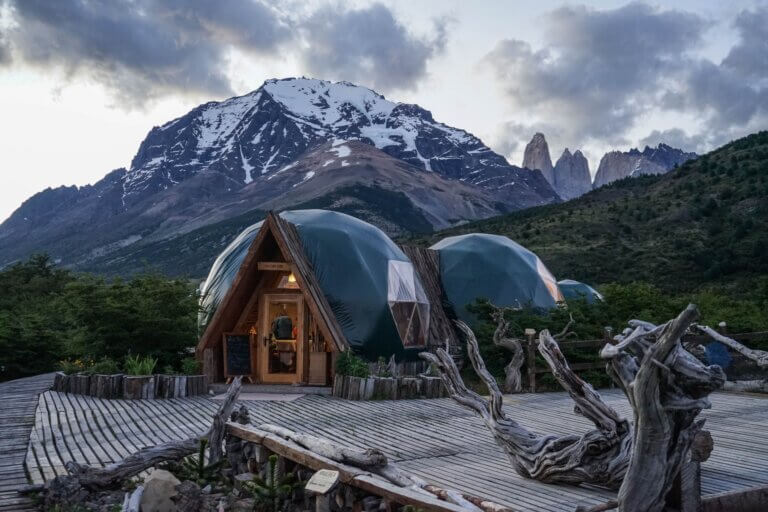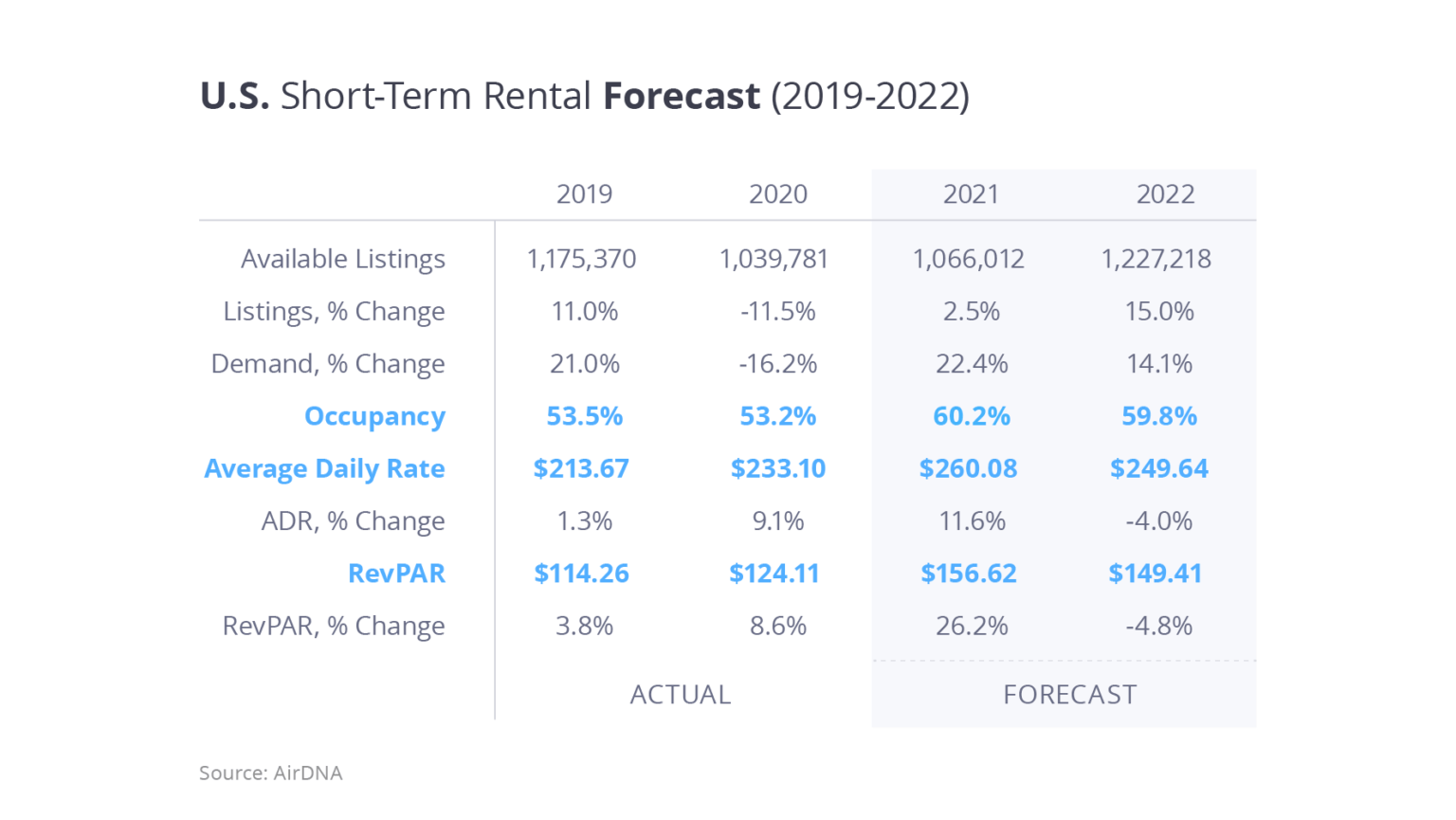
What will 2022 and beyond look like for the travel and real estate industries? As a short-term rental property owner, you’ll want to know what’s trending and what lies ahead in the coming years. Find out what the experts are saying so you can stay ahead of the game. Check out their travel and housing market forecast for 2022.
Top STR data analytics company AirDNA said last year’s industry performance was rather polarizing. In its 2022 Outlook Report, it said pent-up travel caused record-breaking occupancy and surging nightly rates in 2021. But, at the same time, the number of listings saw little growth. Single family home prices rose in the summer, and supply was weak in urban areas. New investments came in at a trickle.
On the up-side, occupancy was at an all-time high. This resulted in increased average daily rates (ADR) – at 11.6%, higher than 2020’s 9.1% – and stronger revenues. By the end of year, AirDNA was expecting a 26.4% increase in revenue for every vacation rental listing in 2021 compared with 2020. That’s on top of the annual growth of 8.6%.
At the end of 2021, the average annual revenue earned by STRs listed full-time was $56,000, its highest level ever. It’s a full 35% higher than at the start of the pandemic, according to AirDNA.
But according to HotelTechReport, the US vacation rental industry’s total revenue was estimated at $13.3 billion. This year’s returns are expected to reach $17.6 billion, with most of it being generated in the United States. With a roughly 10% year-over-year growth rate, the STR industry’s revenue is projected to rise to $20 billion in 2025 and $113.9 billion by 2027.

HomeToGo, the travel metasearch company that acquired vacation rental aggregator Tripping.com in 2018, saw a notable increase in travel spending and length of stay this past year. It reported a 54% increase in average booking value for rental spending, and a 9% increase in the average length of stay compared to pre-Covid 19 times. That’s on a global scale.
In terms of property type, tiny houses became the fastest-growing sector – with a 27% increase – followed by nature lodges, buses, and huts. Meanwhile, homes and apartments, the largest categories of properties in the STR industry, both saw a decline of more than 5% in listings in 2021.

According to AirDNA, the pandemic has accelerated short-term rentals (STRs) into the mainstream. Demand is already 10% higher than pre-pandemic levels, and the industry is generating 40% more revenue – all with 10% fewer listings.
But here’s the deal – the supply can’t keep up with demand. As of April 2021, there were about 4 million hosts leasing out properties on Airbnb. And that isn’t enough. Airbnb CEO Brian Chesky said they needed millions more to meet the demand as travel picked up in the summer.
In May, about 52,000 units were added on either Airbnb or Vrbo, which is about 10% lower than a typical year over the same period.
The emergence of Covid variants like Delta and Omicron has already slowed the growth of supply in 2021. It’s also delaying corporate Americans’ return to their offices. Many employees are still on “work-cations” or hybrid working arrangements, which is further extending their stay in short-term rentals.
Here are the important things we can expect to see this year, based on what hospitality and STR intelligence leaders are saying – here and abroad:
1. The demand for tourism remains optimistic. Patrick Andrae, co-founder, and CEO of Berlin-based HomeToGo says alternative accommodation will continue to “reign as the new zeitgeist in 2022” – especially with travelers who’ve traditionally booked hotels but tried and enjoyed STRs during the pandemic. Others agree, saying guests will continue to perceive vacation rentals as the “safer alternative”. Amiad Soto, CEO of property management software company Guesty, reports continued growth in domestic and international bookings. He said current reservations are now exceeding pre-Covid levels, and that short-term rentals are now a “mainstream accommodation choice”.
2. While international travel will start to recover, domestic travel will continue to drive much of the revenue. HomeToGo reports a 23% increase in searches for stays within the U.S.A. among American travelers, 28% in U.K. searches among the Brits, and 62% in Germany among German tourists.
3. According to AirDNA, demand for vacation rentals in the U.S. will fully recover by the end of 2022 and grow another 14.1% over last year’s levels. While travel to remote, nature-focused destinations will dominate travel in the early half of the year, urban visits to gateway cities will rebound in the latter half of 2022. As more and more companies adjust to hybrid working arrangements, extended stays in cities will increase. Travelers will be combining business and pleasure trips while enjoying the convenience of modern amenities and services or urban areas. In the USA, AirDNA expects demand growth to become highest in large cities as their recovery starts to catch up with other areas.
4. Meanwhile, vacation rentals in rural and coastal towns will remain popular. With travelers still concerned about safety from Covid variants and social distancing, they’ll still opt for nature-focused locations. There’s a fast-growing demand for unique stays and experiences, so expect to see more non-traditional properties in remote, off-the-beaten paths.

In Europe, relaxation is expected to be the main motivator behind travel in 2022. Travelers will book idyllic trips, and island destinations are projected to get the most visits in 2022.
Sport and adventure travel will also see steady growth. Evolve CEO Brian Egan says 58% of 5000 respondents they surveyed expressed interest in exploring the outdoors, while another 68% were planning trips with wellness and relaxation in mind this year.
5. Traditional touristic regions will regain popularity. Florida topped HomeToGo’s list of well-known tourist destinations that will continue to be visited, logging a 70% increase in searches on their engine.
6. Travelers are confident about their plans and are booking STRs at an unprecedented rate. Evolve says 80% of travelers they surveyed were actively moving forward with their 2022 travel plans, and 62% were planning on taking 3 or more trips this year. An overwhelming 86% said they’re planning to book a vacation rental for their accommodation.
7. Tourists are also booking further ahead. The majority of those surveyed (59%) plan on booking trips 3 months in advance compared to around less than 2 months in advance, previously.
8. Stays are expected to be longer – around 5-7 days – this year, compared to an average of 3-3.5 days in the past 2 years.
9. Flexible options will flourish this year. Guests will continue to seek out listings that offer free cancellations and non-traditional accommodations.
10. AirDNA expects an average rate of occupancy to remain strong at 59.8% this year but forecasts ADR to fall by 4% due to changing seasonality and increased supply. Revenue per listing will stabilize due to the expected entry of new operators and decreased nightly rates.

11. Because of more favorable economic conditions, homebuyers are gaining interest to invest in vacation STRs. Overall, AirDNA expects a 15% increase in listings this year over last year, with gains spread across large cities and resort markets across the U.S.
As a short-term rental owner or host, you’ll want to maximize your revenue potential for 2022. You can plan and strategize this year’s growth by heeding what the experts are saying. Based on their above predictions, here are some things you can do for your vacation rental:
Cater more to families, remote workers, and digital nomads. Make sure you have a kitchen that’s well-equipped, complete with a coffee maker and a starter supply of coffee and tea. Provide a designated workstation with corresponding high-speed internet. And to cater to parents – both children and pets. Add child and pet-friendly amenities.
Remote work has given millions of corporate employees untethered flexibility, driving a demand for extended stays of more than 28 days. As a result, longer term occupancies have seen an increase of more than 15% since the start of the pandemic.
There’s also that growing demographic of digital nomads. They are lifestyle travelers who work from anywhere, able to combine business with pleasure at any given time. But they still crave creature comforts. They gravitate towards small towns and neighborhoods with basic amenities and usually stay anywhere from 14 to 90 days.
Also, with home prices rising and the persistent shortage of supply, more and more Americans aren’t able to afford a home purchase. Many end up renting for a while, expecting it to be a transitory, short-term stay. But with the slow availability of new inventory, they often end up staying for the longer term.
If you anticipate an off-season in your particular market, or your property is located in a non-touristy area, this is your chance to jump on a great opportunity.
Electric scooters, e-bikes, golf carts. These are products that appeal particularly to digital nomads. They’re small, lightweight and eco-friendly, and come in handy when “professional travelers” crash at your place. As mentioned above, nomads typically stay longer term and don’t bring their own car when they travel. So they’ll appreciate a reliable but inexpensive way to go around your neighborhood.
Consider renting on Mount, an amenity rental service for property owners. They lease a suite of amenities, from scooters to surfboards to golf clubs.

Use a modern property management system to optimize and streamline your operations. These will not only result in better experiences for your guests, but also higher profit margins for your business.
In the cities, demand for single family homes and moderate income apartments is projected to return. Recommendations are to buy or hold such properties, as corporate offices begin to reopen and workers return to work. Whether they’ll be working on-site full time or just part of the time, it’s sure to drive demand for apartments – especially in high-density areas.
Additionally, with 6.4 million existing homes expected to close in 2022, AirDNA says there will be plenty of opportunities to invest in high-potential short-term rental markets.
Airbnb says 55% of its 100 most wish-listed homes fall under the “unique” category. Last summer, searches for their unique listings grew 94% compared to the same period in 2019.

Ready to learn how we built & operate a $2M/year short term rental business, operate properties throughout the USA remotely, and acquired 70+ properties without owning any in just 2 years? Attend our free online master class to learn how you can do the same. Click here.